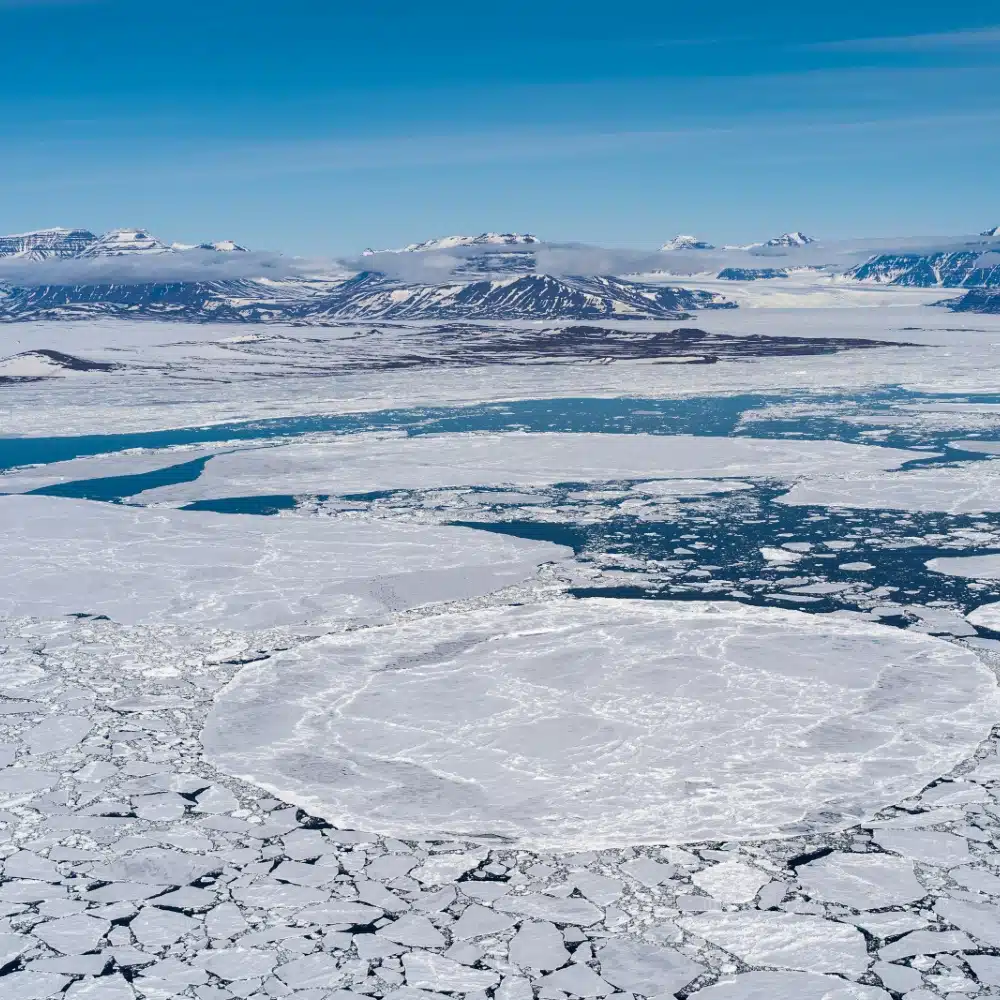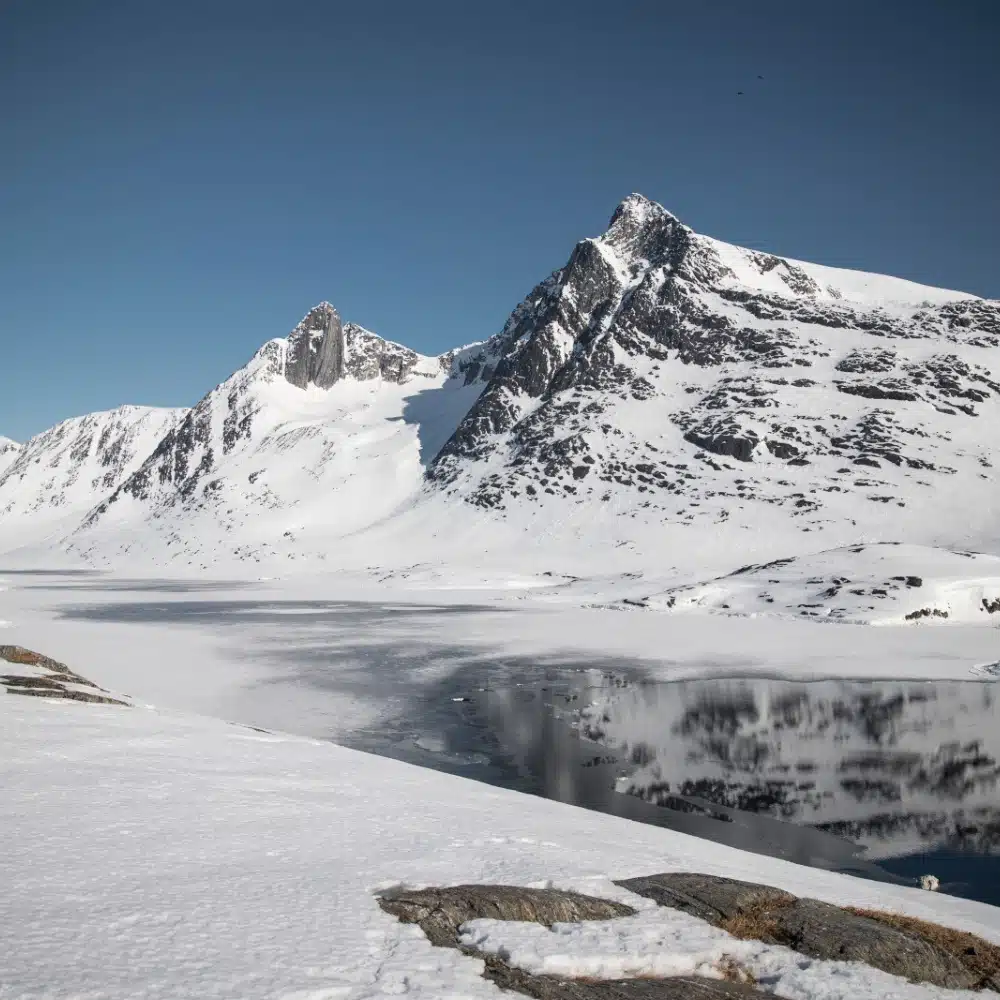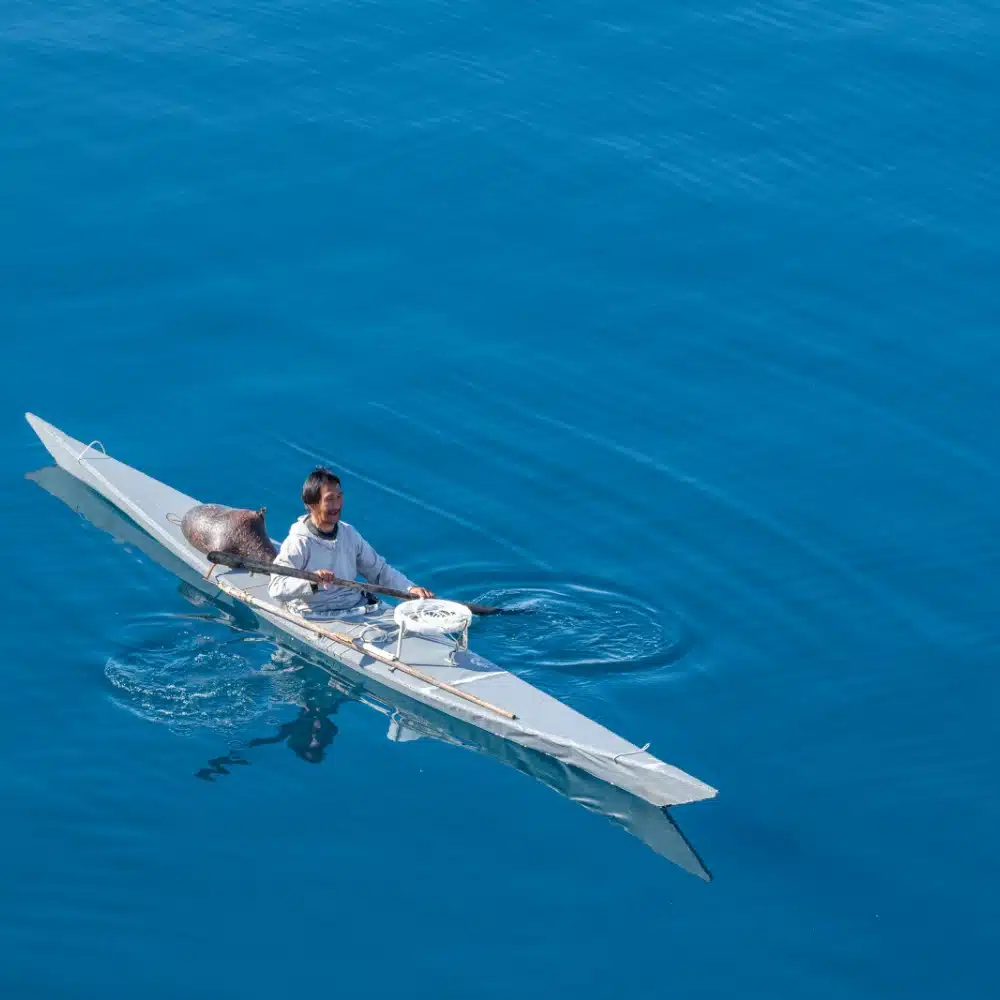200 years of adventures on the edge of Greenland
It will take courage, self-sacrifice and good luck for intrepid travelers to explore the eastern coast of Greenland, which is still wild today. The fault of the ice certainly but not only…
First discoveries
The story is actually very old, and starts with bold navigators from Scandinavia. Around 860, the Vikings first conquered Iceland, literally the “land of ice”.
Around 980, their leader Erik the Red, banished from this colony, discovered a new land further west which he deliberately named Greenland, the “green land”. The avowed aim was to attract new settlers to this large island, which was then green during the summer on its coastline.
In the 13th century, the Vikings were at their peak, with between 3,000 and 6,000 settlers living on the west coast of Greenland and the south of the east coast. They will totally disappear during the 15th century, or maybe before. Conflicts? Epidemics? Climate? The mystery has still not been solved.

Three centuries later, the icy Arctic Ocean became popular with whalers and sealers. Hunting and fishing are miraculous but the approach of the East coast is still forbidden.
An inaccessible coast
Unlike the west coast, the east coast of Greenland is difficult to access. This is due to the omnipresence, even in summer, of sea ice made up of pieces of dislocated pack ice in which icebergs are embedded, and which drifts along a powerful marine current from the northeast of Greenland to Cape Farwell at the southern tip, while the winds and tides constantly modify the freezing conditions.
The waltz of explorers

Nevertheless, half a dozen scientific expeditions succeeded in exploring this eastern coast during the 19th century, including those of the British William Scoresby in 1822, Edward Sabine and Douglas Clavering the following year, the Swedish Otto Nordenskjöld in 1883 and the Norwegian Fridtjof Nansen 10 years later. As for the whale hunters, there were probably many who succeeded in this feat, but none of them left a record of their visit.
The French navigator Jules Poret, baron de Blosseville, was an ambitious sailor. His encounters with explorers such as Sir John Franklin, who was one of the first to attempt to map the Northwest Passage, encouraged him to mount his own expedition. In 1833, he was charged with exploring the coasts of Iceland and Greenland.
During the summer of 1833, the commander of La Lilloise reached the eastern coast and recognized uncharted lands between 68°34′ and 68°55′ latitude, and drew the first map. However, it later sank in a shipwreck. No trace of La Lilloise and its sailors was ever found and this inhabited land was called “Blosseville Coast”.
Polar exploration and literature
The disappearance of Blosseville left its mark on a famous writer. Jules Verne mentioned the fate of the sailor-explorer in three of his novels: A Journey to the Center of The Earth (1864), The Adventures of Captain Hatteras (1866) and An Antarctic Mystery (1897).
The Danish explorers Georg Carl Amdrup and Gustav Holm also made a major contribution to the exploration and mapping of this eastern coastline. Gustav Holm led the first scientific expeditions programmed by the Danish government to study the former Viking colonies between 1880 and 1884. In 1882, he succeeded in sailing into Ammassalik Bay, where he discovered the existence of eleven Inuit communities.
Another French navigator distinguished himself during an expedition accomplished in 1905 with the three-masted ship Le Belgica. On July 28th, the Duke of Orleans discovered an unknown land that he named “Terre de France” (Land of France), soon renamed “Terre du Duc d’Orléans” (Land of the Duke of Orleans) in his memory.

Between 1925 and 1936, the French commander Jean-Baptiste Charcot multiplied his navigations in the Greenland Sea and his stopovers in Scoresby Sund, establishing friendly relations with the natives.
These experiences led the “gentleman of the poles” (Charcot’s nickname) to participate in the installation of the first French polar station during the second International Polar Year (1932-1933). About fifteen sailors and scientists thus realized the first French wintering north of the Arctic Circle.
The heart of men
His name is Paul-Émile Victor and he does not lack nerve. Thanks to his mentor, Commander Charcot, the young 27-year-old ethnologist was deposited during the summer of 1934 in Ammassalik, on the east coast of Greenland. He undertook to study for a year those who are still called “Eskimos”, their habits and customs.
Quickly adopted, “Wittou” (his nickname) multiplied his field visits. During the summer of 1936, he crossed the immense Greenland ice cap from West to East by dog sled.

Once he arrived in port, he decided to winter with his adoptive family in Kangerlussuatsiaq (the “Almost-not-quite-great-fjord”), 250 kilometers from the nearest Danish trading post.
As an “Eskimo among Eskimos”, he continued his work as an ethnologist. He recounted his adventures with ease in two stories: Boréal (1937) and Banquise (1938).
Paul-Émile Victor (1907-1995)
Paul-Émile Victor also worked as a geographer between 1934 and 1937. He reached the summit of Mount Forel (3,360 m), and mapped the glaciers of the Sermilik Fjord, giving them French names such as “Glacier Pourquoi-Pas” or “Glacier des Champs-Élysées”.
During the Second World War, Greenland became a strategic location to the point that the Americans established air bases along its entire coastline. Fearing the German presence in its northeastern part, the Danish set up a dog sled patrol in the summer of 1941 to carry out surveillance missions. From then on, the Sirius Patrol never stopped patrolling this wilderness area, which is partly made up of the huge Northeast Greenland National Park (974,000 km²).

During the Cold War, Greenland became a privileged observation post for the Americans, who reinforced their existing bases and set up a defensive line called the “Dew Line”, a network of radar stations whose purpose was to detect any Soviet intrusion, including the dreaded intercontinental missiles.
At the same time, Frenchmen (under the leadership of Paul-Émile Victor) set out to explore the heart of the ice cap, about which nothing was yet known. Although the French Polar Expeditions (EPF) were in full swing in the 1950s and 1960s, no one suspected the future significance of these pioneers’ discoveries in glaciology. Their studies have informed the current study of climate change, and the eastern coast of Greenland remains today as wild, mysterious and enigmatic as ever.
Photo credits: ©StudioPONANT/O. Bleunven/M. Monneret; ©PONANT/C. Miller Hopkins; ©PONANT/I. Dawson; ©iStock

PONANT takes you there
Explore the most unexplored coastlines of the Far North



